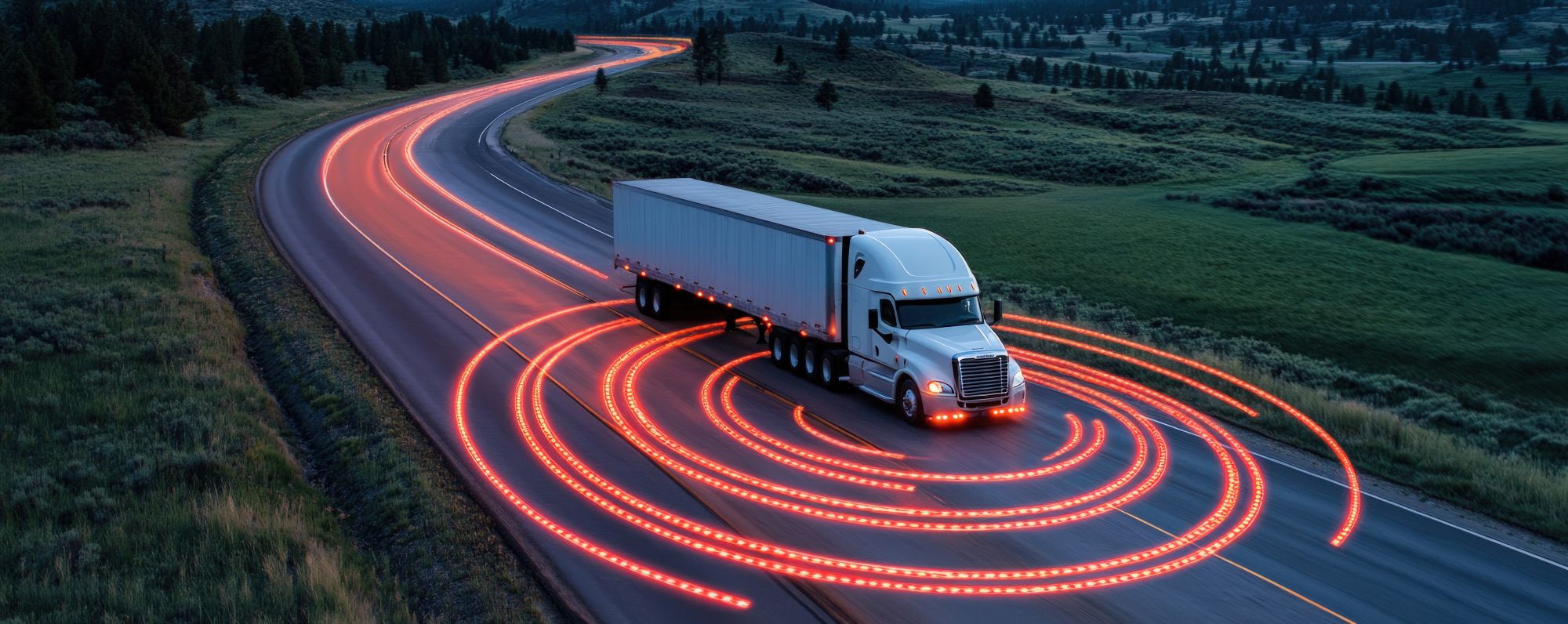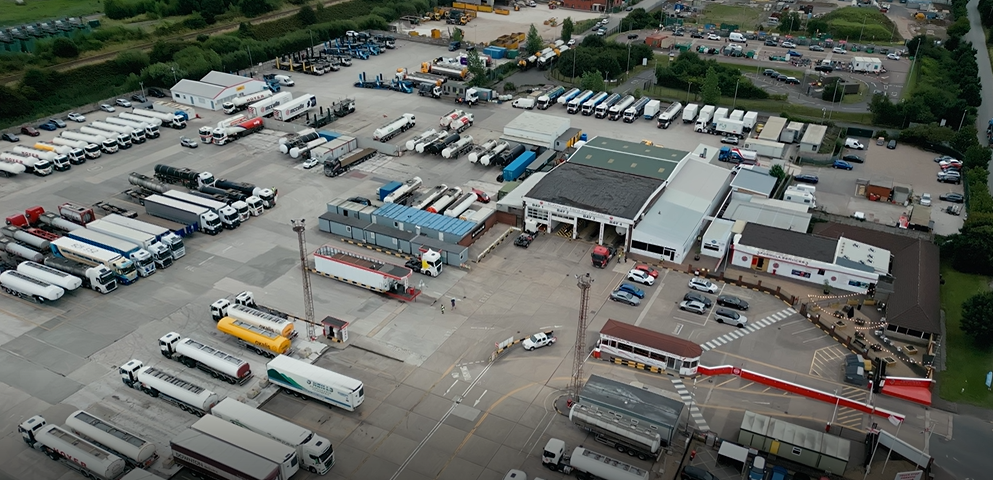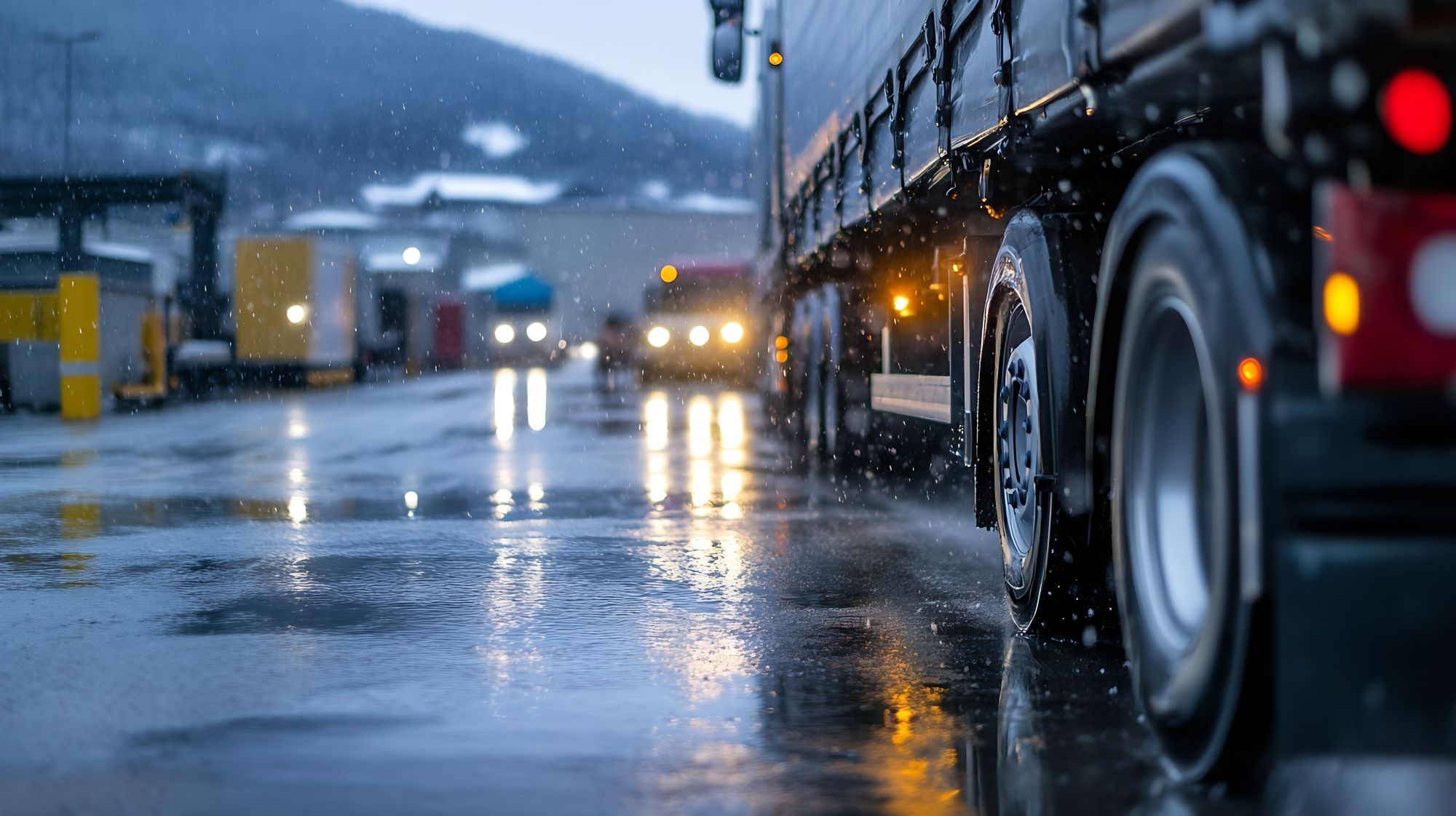
Susie Jones
Autonomní nákladní vozidla: Rozplétání cesty před námi
Vytvořeno: 16.05.2025
•
Aktualizováno: 23.05.2025
Autonomní nákladní vozidla - pro někoho odstrašující představa, ale zřejmě budoucnost logistického průmyslu. S technologickým pokrokem v tomto odvětví je vyhlídka na částečně nebo zcela autonomní vozidla, která budou doručovat vaše zboží, vysoká. Podle britské vlády by to mohlo být již v roce 2026, protože v květnu 2024 vstoupil v platnost zákon o automatizovaných vozidlech (AV).
Co se však stane, když se autonomní nákladní vozidlo dostane do nehody? Kdo nese odpovědnost? V tomto blogu se podíváme do světa autonomie, jak by mohla ovlivnit odvětví mobility, kdo nese odpovědnost při nehodách a co si o této změně myslí řidiči.
Jaké jsou různé úrovně automatizace?
Existuje šest úrovní automatizace řízení:
Úroveň 0 - žádná automatizace. Všechny úkoly řízení provádí člověk.
Úroveň 1 - asistence řidiče. Vozidlo je vybaveno jediným automatickým systémem.
Úroveň 2 - částečná automatizace. Vozidlo může provádět řízení a zrychlování. Člověk však stále sleduje všechny úkoly a může kdykoli převzít řízení.
Úroveň 3 - Podmíněná automatizace. Vozidlo může provádět většinu jízdních úkonů. Stále je však vyžadováno ovládání člověkem.
Úroveň 4 - Vysoká automatizace. Vyžaduje se geografické ohraničení a vozidlo může za určitých okolností provádět všechny úkoly řízení. Možnost ovládání člověkem.
Úroveň 5 - Plná automatizace. Vozidlo provádí všechny jízdní úkony za všech podmínek. Není nutná žádná lidská pozornost ani interakce.
Jak fungují autonomní nákladní vozidla?
Senzory, kamery a umělá inteligence umožňují autonomním nákladním vozidlům jezdit samostatně. Pokročilé programy rozhodují místo lidských řidičů.
Problémy, se kterými by se odvětví mohlo potýkat
Právní aspekty - Kdo nese odpovědnost při nehodách? Je to řidič, jeho zaměstnavatel nebo údržbářská firma? Tuto otázku rozebíráme níže.
Infrastruktura - Naše stávající silnice jsou stavěny pro svět benzinových motorů. Proto je nutné infrastrukturu modernizovat nebo vyměnit, aby podporovala flotily samořízených vozidel, což vyžaduje peníze a značnou politickou vůli.
Společenské změny - bude také nutné změnit postoje veřejnosti. Vyhlídka na vozidla s umělou inteligencí je pro mnohé skličující, protože se obávají o bezpečnost, sledování cesty a šedé právní oblasti týkající se dopravních nehod.
Bezpečnost - systém, který se spoléhá na digitální sítě, je zranitelnější vůči kybernetickým hrozbám.

Co si řidiči kamionů myslí o autonomních kamionech?
Bezpečnost autonomních kamionů je v tomto odvětví horkým tématem diskusí, přičemž mnozí diskutují o tom, zda je tato technologie na spolehlivé úrovni, aby se dokázala vypořádat s nepředvídatelným počasím a rozpoznat překážky - což řidiče kamionů na stránkách SNAP na sociálních sítích znepokojuje:
"Při sebemenším dešti ztratí můj vůz všechny automatické funkce, AEBS a tempomat. Není možné, aby nákladní auta v dohledné době jezdila sama bez řidiče."
"To způsobí další smrt na silnicích a další fronty. Jen si vzpomeňte, jak spolehlivá je elektronika ve vašem vozidle Euro 6. Stejní lidé vyrábějí autonomní nákladní automobily."
Právní aspekty - kdo je zodpovědný za nehody?
V případě nehody se může odpovědnost přenést mezi řidiče a výrobce. Soud musí určit, zda byla nehoda způsobena technickou závadou, nedostatečnou údržbou nebo chybou řidiče.
Odpovědnost výrobce
Výrobce je odpovědný v následujících případech: - Porucha snímače
Závady softwaru
Nedostatečná opatření kybernetické bezpečnosti
Nedostatečné testování
Odpovědnost řidiče/vozového parku
Řidič autonomního nákladního vozidla může být odpovědný za nehodu, pokud zanedbá nezbytný servis nebo údržbu potřebnou pro správnou funkci vozidla - lze namítnout, že tato odpovědnost může dopadnout i na správce vozového parku.
I přesto panují mezi pracovníky v oblasti mobility určité nejasnosti. Na našich stránkách sociálních médií jsme se zeptali řidičů nákladních vozidel, kdo by podle nich nesl odpovědnost v případě nehody s autonomním vozidlem. Podle 51 % řidičů by byl odpovědný řidič, 37 % navrhovalo výrobce automatizovaných nákladních vozidel a 12 % se domnívalo, že vývojáři softwaru.
Je zřejmé, že než se autonomní nákladní automobily stanou trvalou součástí našich silnic, je třeba, aby se v tomto odvětví více vyjasnilo.
Jak vypadá budoucnost?
Ve své revidované kampani TruckPark of the Future se SNAP zabývá budoucností odvětví mobility. S technologickým pokrokem budou v tomto odvětví hrát významnou roli autonomní vozidla, přičemž je 50% pravděpodobnost, že by stroje mohly v příštích 120 letech převzít všechna lidská pracovní místa.
Jak se však vypořádají s některými z nejnebezpečnějších evropských dálnic?
Řízení nákladního vozidla je víc než jen sezení za volantem - často jde o navigaci v neustále se měnících a nepředvídatelných podmínkách na silnici. Nabízí se otázka, zda by si autonomní nákladní vozidla mohla poradit s některými z nejhorších silnic v Evropě. Na základě své nejnovější kampaně Hazardous Highways identifikoval SNAP nejnebezpečnější evropské silnice, přičemž výsledky ukázaly, že největší obavy vzbuzují Bulharsko, Litva a Česko.
Dalo by se říci, že autonomní nákladní vozidla budou čelit problémům, když se budou snažit pohybovat po některých z těchto silnic bez lidské interakce. Situaci by mohla zkomplikovat omezená přesnost GPS, rušení senzorů a nedostatek konzistentní infrastruktury.



